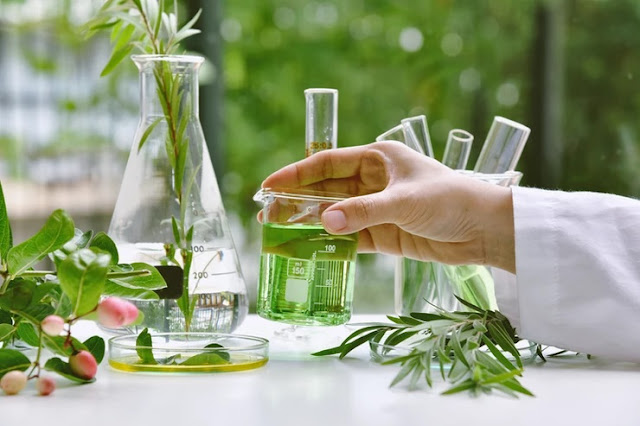Clean Beauty - Avoid the 12,000 approved chemicals.
On average woman use 12 skincare, cosmetic and beauty products per day, exposing our bodies to 168 chemicals per day according to a 2004 study by the Environmental Working Group (EWG). There are around 12,000 approved chemicals used in skincare and cosmetics, so imagine a year of use with a variety of selected products, now imagine the exposure after a decade of use.
Research shows that some of these chemicals cause disruption to our hormones and the delicate balance of our endocrine system. Our endocrine system includes the thyroid, adrenals, ovaries, pancreas, hypothalamus and pituitary glands. Chemicals which disrupt this balance are called endocrine-disrupting chemicals (EDCs) and this includes anything that our body comes into contact with, including water, food, skin and beauty products. These chemicals interrupt the workings of our hormone system namely the production, transport, breakdown, binding and elimination of hormones. Ultimately these chemicals disrupt the balance of our body which can manifest as a number of health issues, ranging from diabetes to cancer and even our ability to create life.
Skincare ingredients that should be avoided at all costs include:
Formaldehyde: A known carcinogen and irritant found in nail products, hair dye, fake-eyelash. Formaldehyde is Still Approved at up to 0,2% in Skin-care Products within EU.
Fragrance: Hormone-disrupting effects. Fragrance is also connected to headaches, dizziness, asthma and allergies. Find products which are naturally fragranced.
Lead: A known carcinogen and hormone disruptor found in some eyeliners, hair dye and lipsticks.
Mercury: A known irritant and allergen that accumules in the body over time. It causes mood swings, muscle weakness, memory loss, skin rashes, and mental disturbances.
Parabens (Propyl-, Isopropyl-, Butyl- and Isobutyl-): Used as preservatives in many products. Journal of Applied Toxicology in 2004 published research showing detected parabens in breast tumors. The reports showed esters of p-hydroxybenzoic acid (parabens) detected in samples of tissue from human breast tumours and discussed their estrogen-like properties.
Oxybenzone: An active ingredient in sunscreens that accumulates in fatty tissues and is linked to allergies, hormone disruption and cellular damage.
DEA/TEA/MEA (Ethanolamines): Diethanolamine (DEA), Monoethanolamine (MEA), and Triethanolmine (TEA) are hormone-disrupting chemicals known to form nitrates and nitrosamines, often in conjunction with other chemicals present in a product, e.g. Cocamide DEA, or Lauramide DEA. They are almost always in products that foam: bubble bath, body wash, shampoo, soap, facial cleanser.
Sodium lauryl sulfate (aka SLS, SLES): A former industrial degreaser now used to make soap foamy, it’s absorbed into the body.
How many high street products we use every day have these chemicals - pretty much all of them!
Not only that but a perusal of Ethical Consumer shows that most high street cosmetic suppliers score very low down the scale in terms of environmental damage from chemical usage, micro plastics, mineral oils which pollute our seas, choke our wildlife and destroy our planet.
Source By : https://www.cbeskin.com/post/clean-beauty-avoid-the-12-000-approved-chemicals



Comments
Post a Comment